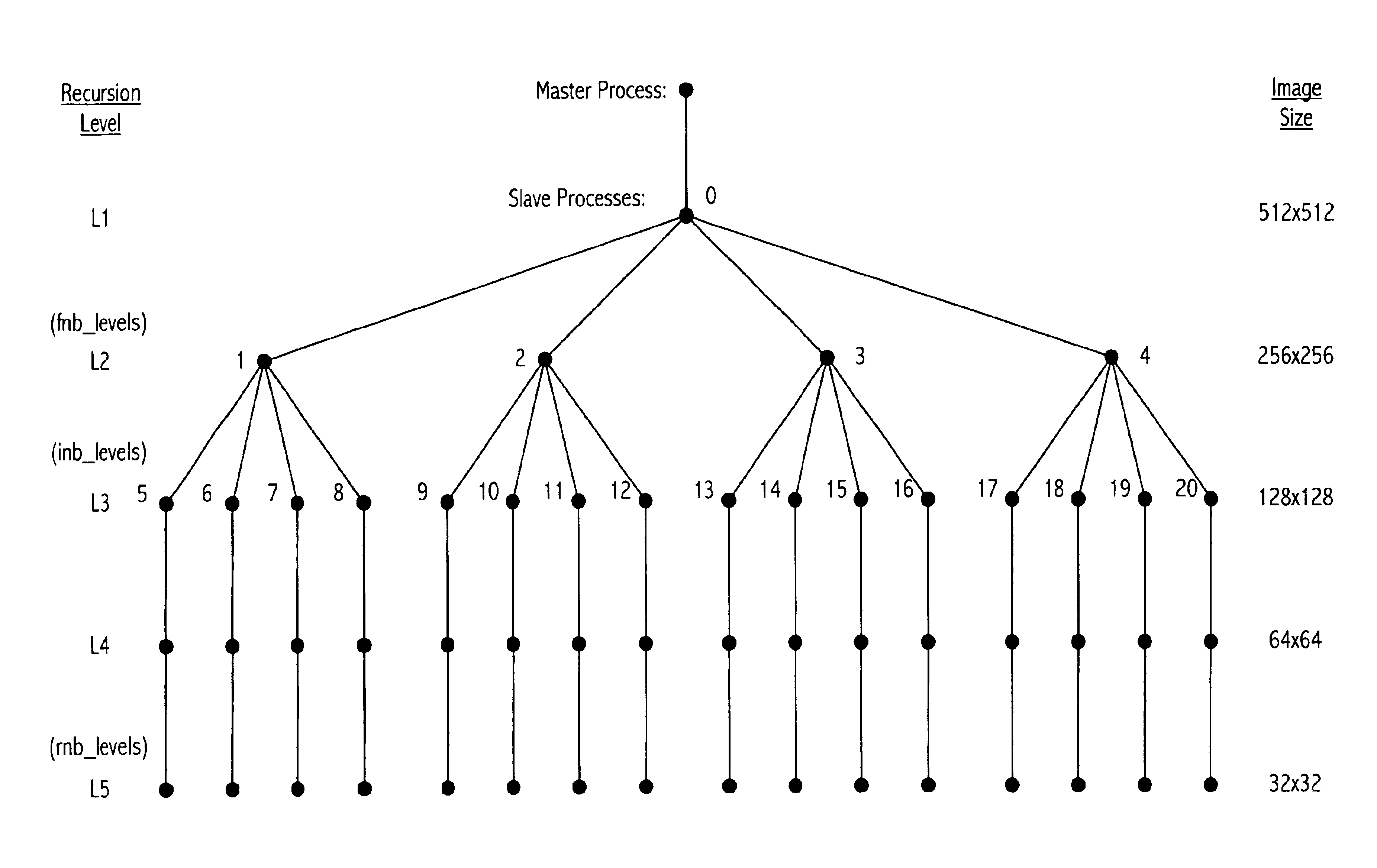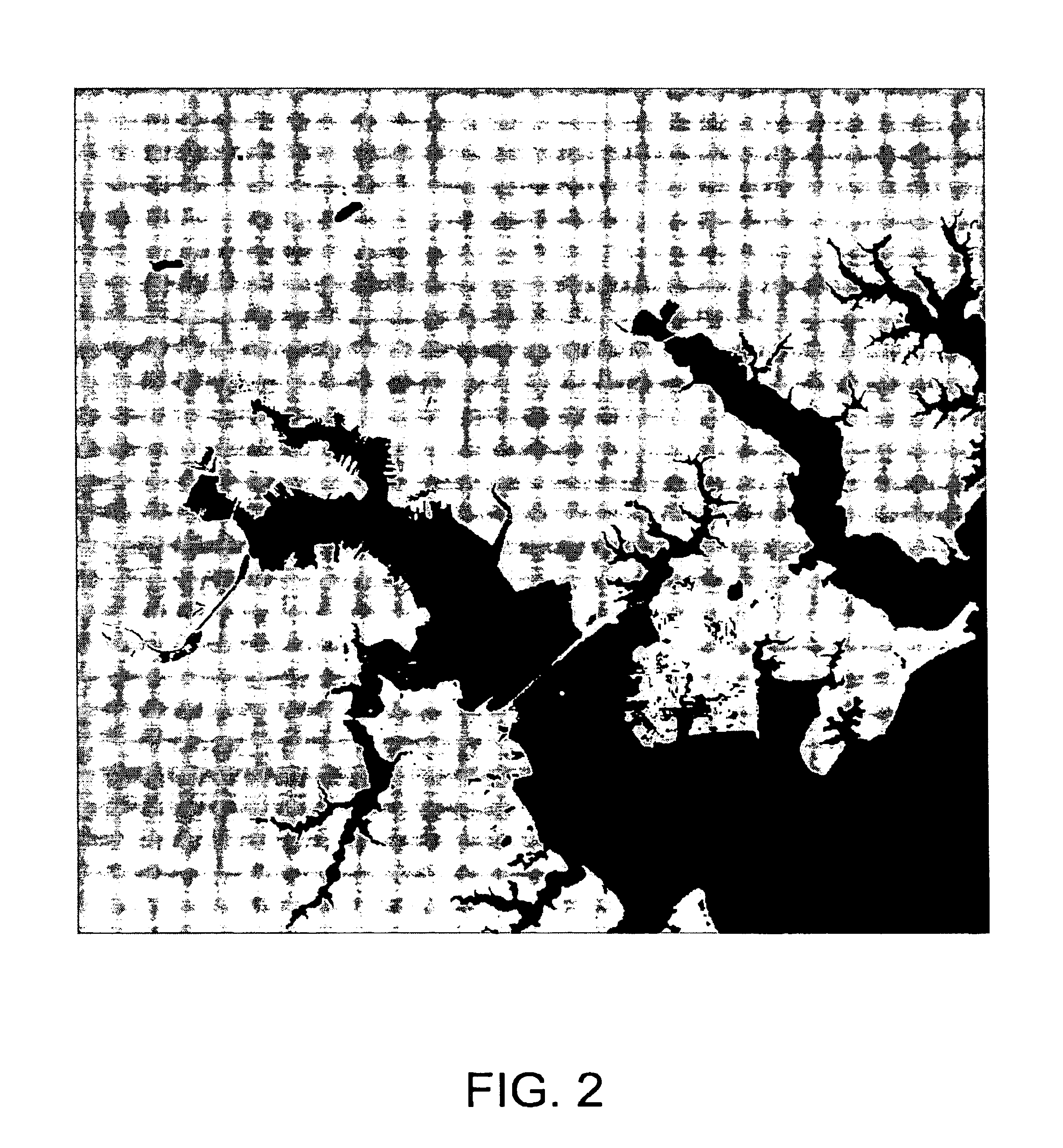Method for implementation of recursive hierarchical segmentation on parallel computers
- Summary
- Abstract
- Description
- Claims
- Application Information
AI Technical Summary
Benefits of technology
Problems solved by technology
Method used
Image
Examples
Embodiment Construction
[0041]Reference will now be made in detail to the present preferred embodiments of the present invention, examples of which are illustrated in the accompanying drawings, wherein like reference numerals refer to like elements throughout.
[0042]The Basic Hierarchical Segmentation (HSEG) algorithm is as follows:[0043]1. Give each image pixel a region label and set the global criterion value, critval, equal to zero. If a pre-segmentation is provided, label each image pixel according to the pre-segmentation. Otherwise, label each image pixel as a separate region.[0044]2. Calculate the dissimilarity criterion value between each spatially adjacent region.[0045]3. Find the smallest dissimilarity criterion value, and merge all pairs of spatially adjacent regions with this criterion value.[0046]4. Calculate the dissimilarity criterion value between all pairs of non-spatially adjacent regions.[0047]5. Merge all pairs of non-spatially adjacent regions with dissimilarity criterion value less than...
PUM
 Login to View More
Login to View More Abstract
Description
Claims
Application Information
 Login to View More
Login to View More - Generate Ideas
- Intellectual Property
- Life Sciences
- Materials
- Tech Scout
- Unparalleled Data Quality
- Higher Quality Content
- 60% Fewer Hallucinations
Browse by: Latest US Patents, China's latest patents, Technical Efficacy Thesaurus, Application Domain, Technology Topic, Popular Technical Reports.
© 2025 PatSnap. All rights reserved.Legal|Privacy policy|Modern Slavery Act Transparency Statement|Sitemap|About US| Contact US: help@patsnap.com



